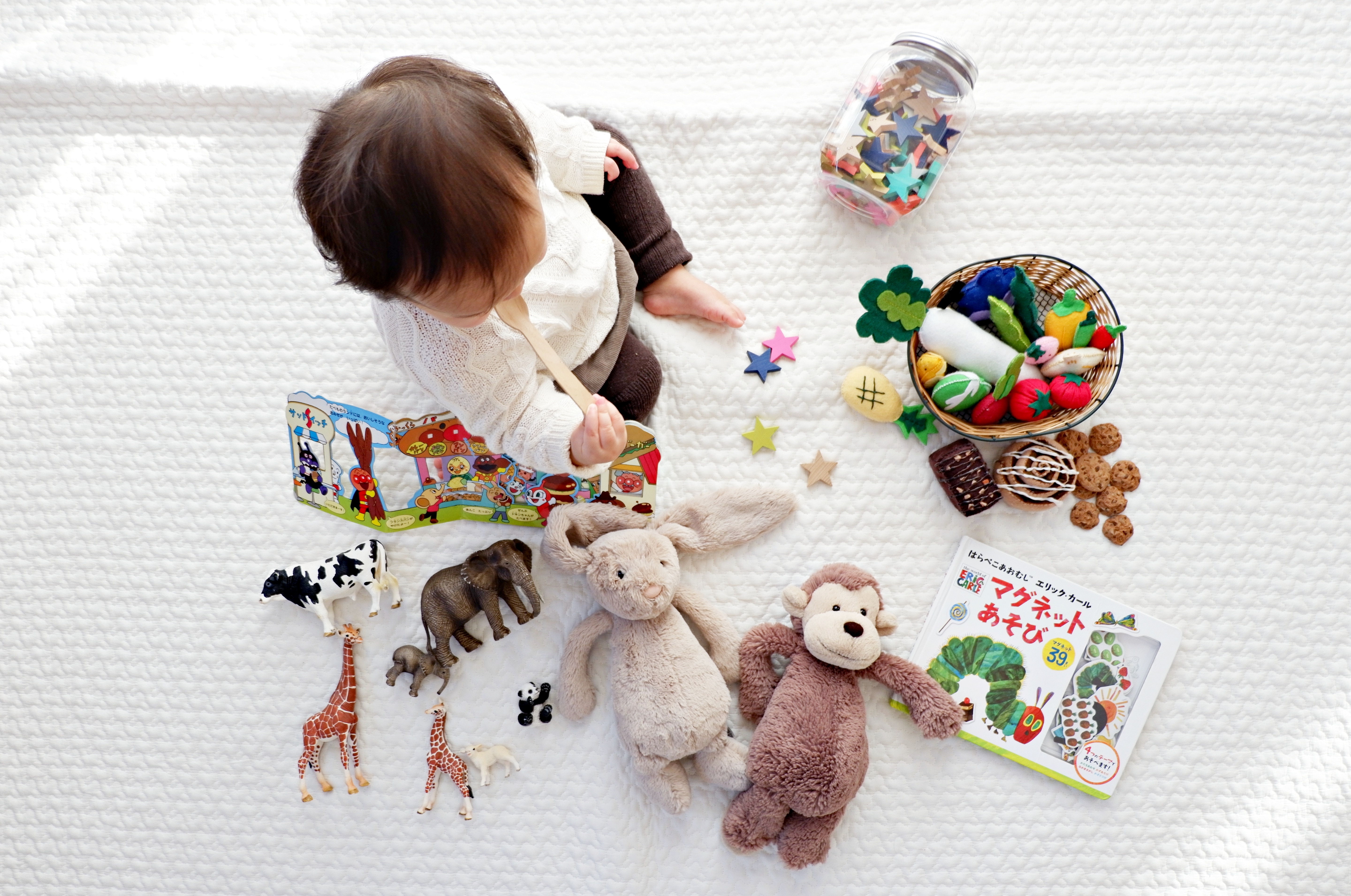Play is a serious matter. Children learn so many skills through play. But you don’t need to go out and buy all the newest bits and bobs that have been released, just have a look around at what you already have!
What games will help my child develop language?
Do I have to buy them more things?
Picture a child who is eager to engage with you but without the language skills to do so. They can often get frustrated.
One of the best ways to help your child is to sit down with them, at their eye level and play.
You will already know what your child’s latest favourite toy is, so follow their lead and join in with play.
Start to add in more events into their play sequences (e.g. if they are pushing the train along the track with animals in it, pretend that a tree fell down and the train had to stop and fix the tree before continuing).

Whilst doing this, you can help them learn language by saying simple, short words or phrases in context as you play (e.g. ‘push train’, ‘elephant in’, ‘put in’ ‘push’, ‘crash’, ‘stop’, ‘fix’, help’). The options for adding language to play is almost endless!
A fun way to learn about body parts is to play with toy animals or dolls and pretend to put bandaids on their body parts that are sore (I use torn up tissue and wrap it around the part I am supposed to be fixing).
If you are still looking for something new for your child to play with, games that have multiple parts are great for building language (e.g.: sandwich sets where you have to request for different parts in the sandwich, or shopping / cooking / building sets).
If you do feel that your child is not tracking along with the rest of their peers with their language skills (both in what they are saying and understanding), or if they appear to have underdeveloped play skills, you can contact Ish to see if an assessment is necessary to support your child’s quest to engage with the world.
